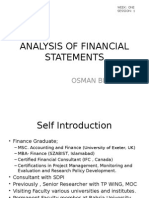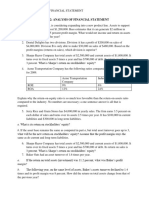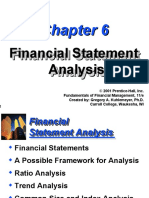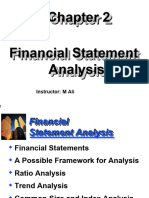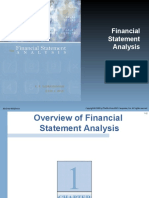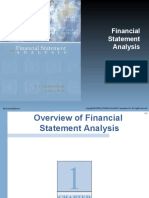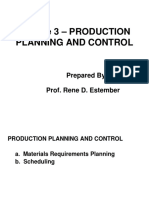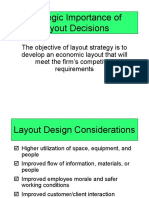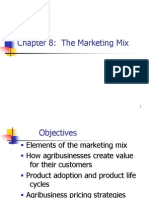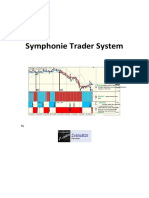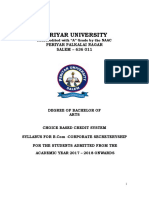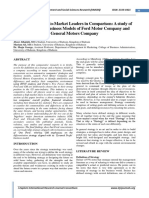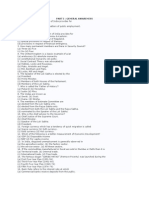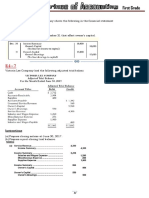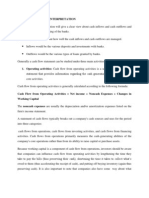0% found this document useful (0 votes)
79 views23 pagesFinancial Statement Analysis
Here are the reconstructed balance sheet and income statement for Huff and Puff Industries for 2002 based on the given financial ratios:
Huff and Puff Industries
Balance Sheet
As of December 31, 2002
Assets
Current Assets
Cash (1) P16,000
Accounts Receivable (2) P31,000
Inventory P23,000
Total Current Assets P70,000
Fixed Assets P55,000
Total Assets P125,000
Liabilities and Equity
Current Liabilities P38,000
Long-Term Debt P37,000
Total Liabilities P75,000
Stockholders' Equity P
Uploaded by
Hinata UzumakiCopyright
© © All Rights Reserved
We take content rights seriously. If you suspect this is your content, claim it here.
Available Formats
Download as PDF, TXT or read online on Scribd
0% found this document useful (0 votes)
79 views23 pagesFinancial Statement Analysis
Here are the reconstructed balance sheet and income statement for Huff and Puff Industries for 2002 based on the given financial ratios:
Huff and Puff Industries
Balance Sheet
As of December 31, 2002
Assets
Current Assets
Cash (1) P16,000
Accounts Receivable (2) P31,000
Inventory P23,000
Total Current Assets P70,000
Fixed Assets P55,000
Total Assets P125,000
Liabilities and Equity
Current Liabilities P38,000
Long-Term Debt P37,000
Total Liabilities P75,000
Stockholders' Equity P
Uploaded by
Hinata UzumakiCopyright
© © All Rights Reserved
We take content rights seriously. If you suspect this is your content, claim it here.
Available Formats
Download as PDF, TXT or read online on Scribd
/ 23







